Tricia Wright
Tricia Wright
Workspace Program Resident 2019
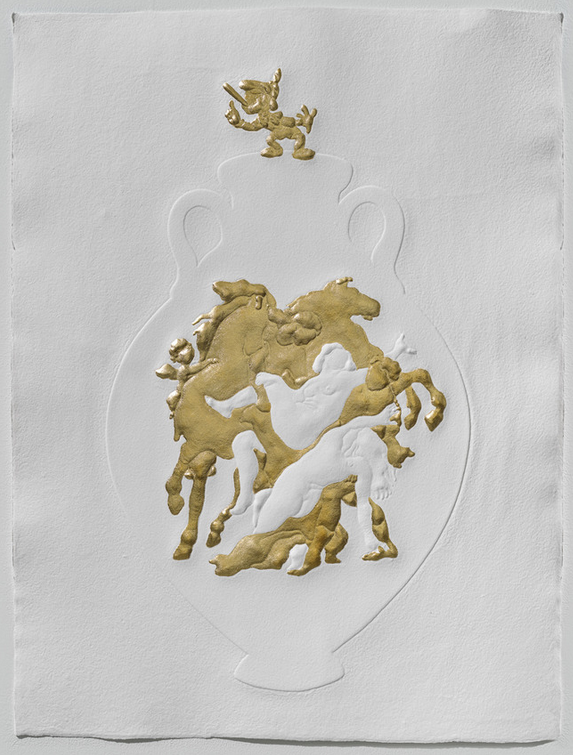
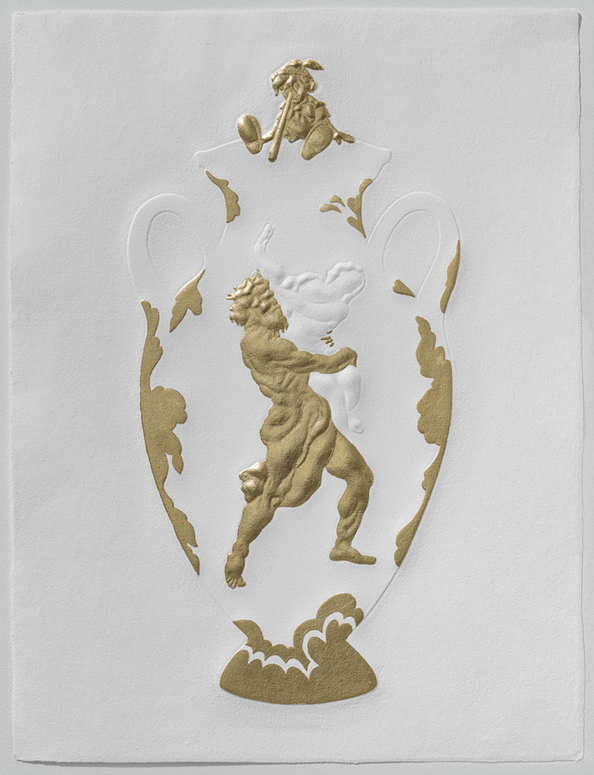

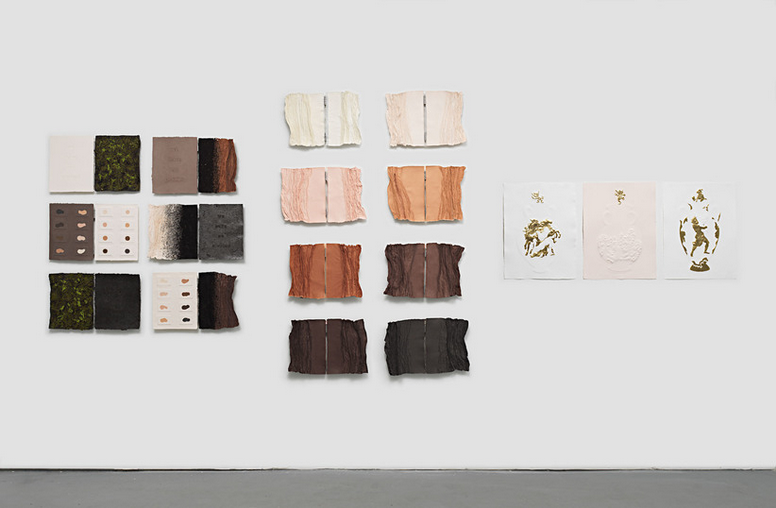
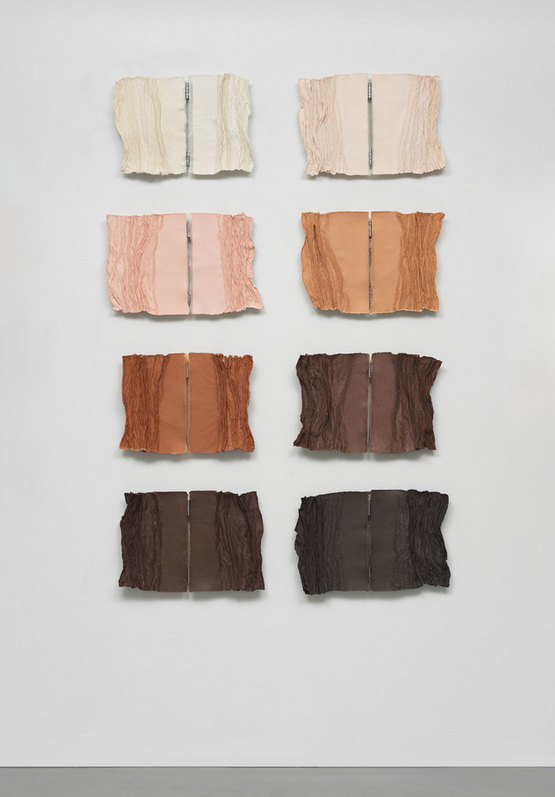
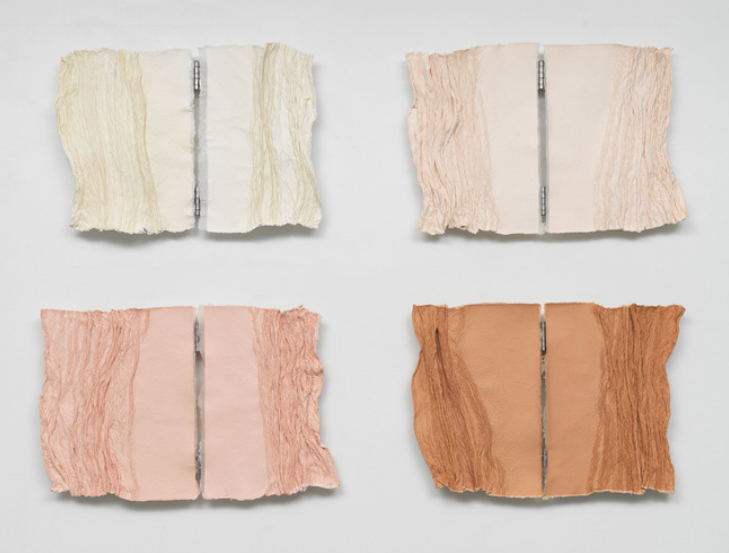
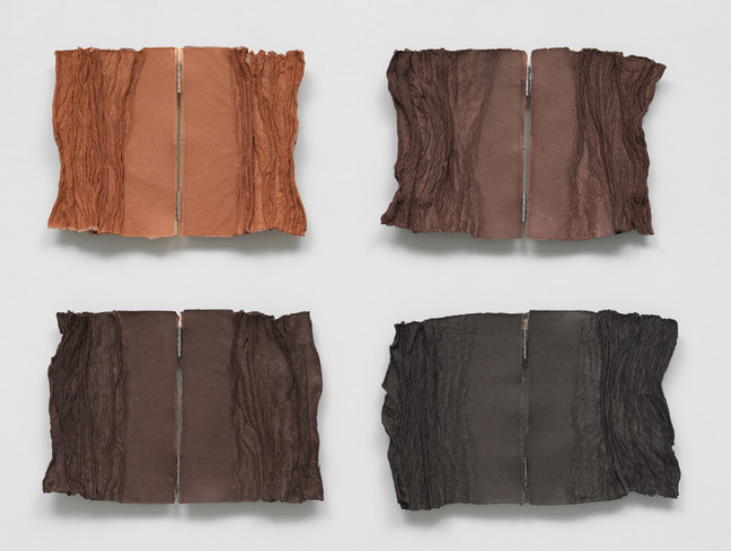
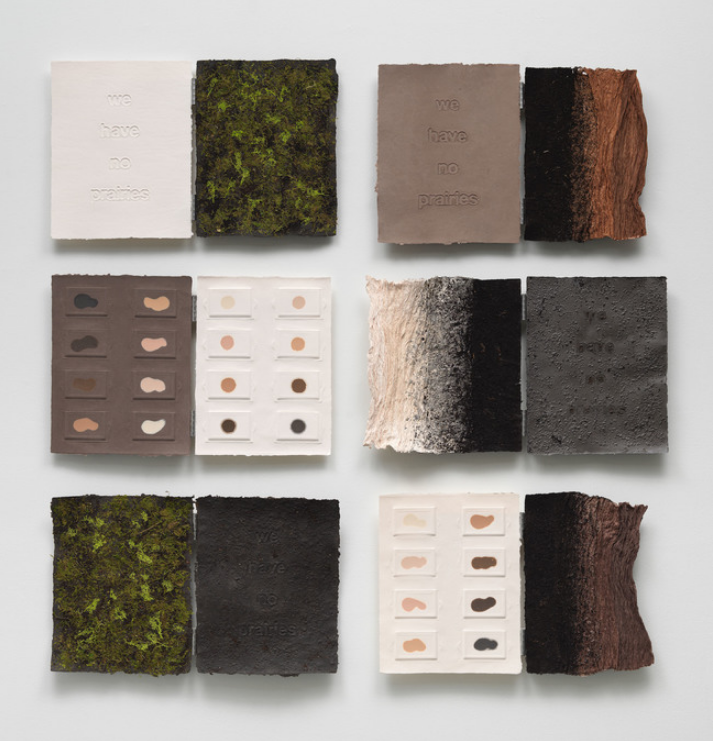
Some of the work I produced at Dieu Donné makes direct allusions to Bogland. These incorporate crushed peat turf and moss directly into paper pulp, and the paper is debossed with text from the poem. Other works, Pandora’s Box and Little Liar, expand on the poem’s meditation on our connection to the past, in works that reference ancient and classical narratives, and consider their longevity in modern culture. In Pandora’s Box the mythical container is replaced with eight books pigmented in skin tones, the pulp manipulated to evoke textures of skin. For Little Liar the paper is embossed and gilded. The embossed areas were created using 3-D forms generated from drawings I made of artworks by Rubens, Ingres, Bernini, and Disney Studios.
—Tricia Wright, 2019
Tricia Wright’s practice centers around the conventions of representation and mechanics of perception, together with a commitment to marginalized spaces and experience. Much of her work draws on the past as a strategy for considering the present moment, making references to art history as well as classical and modern texts.
The work produced during her residency at Dieu Donné centers on ideas of inheritance, both in the personal sense and as cultural legacy. Wright drew inspiration specifically from Seamus Heaney’s poem Bogland. Heaney wrote about how in Ireland—unlike America with its vast landscape and pioneer history—the tendency is to look inward and downward, and in the action of digging the bog there is a palpable connection to history as each successive layer is stripped away. The poem resonates with Wright as a European transplant to the United States, but more especially in that it describes an intimately familiar landscape, in both a physical and psychological sense. For Wright, the poem articulates an inescapable connection to the past, a natural place from which to consider ancient narratives and their capacity to endure, in particular with regard to perceptions of women.
In the Studio
About the Artist
Tricia Wright (b. England) attended art schools in London, where she lived with her family before relocating to New York in 1999. She devotes the majority of her time to her studio practice, commuting between upstate New York and NYC, where she works at Judd Foundation. Tricia is also a freelance editor/writer; her most recent book, American Art & Artists, was published by Harper Collins in association with the Smithsonian Institute. She is also a freelance art guide, creating private tours of NYC museums and galleries. She has worked as a museum educator at numerous art historical sites including the Glass House (CT) where she designed the Art Focus Tour, Olana (NY), and Lyndhurst (NY) where she trained and managed a team of guides. Her works are in museum, corporate, and private collections. (Source: Artist’s website)
For more information, please visit their website: https://triciawright.com/











